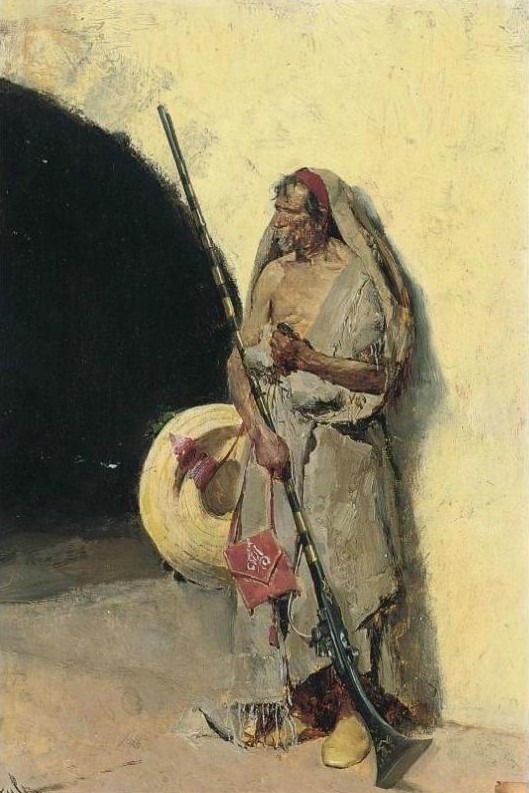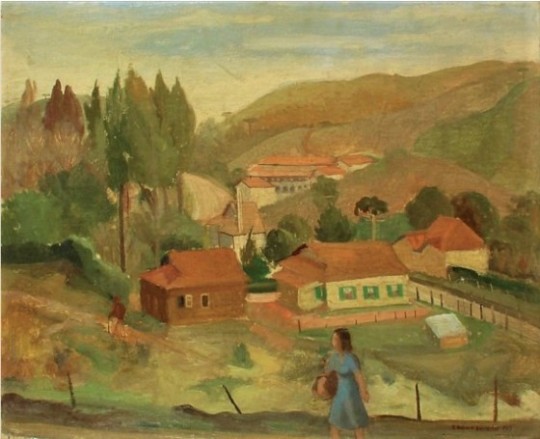#francisco campos
Text
La ofensiva “Hasta el tope” fue lanzada por la guerrilla de El Salvador el 11 de noviembre de 1989.

4 notes
·
View notes
Text

The Romantic Novel
Francisco Peralta Del Campo
#summer#mood#lazy#sleeping#spanish art#art#painting#art history#fashion#portrait#nature#Francisco Peralta Del Campo#flowers#garden
2K notes
·
View notes
Text


"life comes in clusters; clusters of solitude, then a cluster when there is hardly time to breathe."
#artist is alfred stevens#artist is francisco peralta del campo#artedit#art history#arthistoryedit#art parallels#going for some laid back art piece edits right now#enjoy
239 notes
·
View notes
Text

Madalena Campos by © Francisco Mota
5 notes
·
View notes
Text




Francisco Simões, Festa Brava, painéis, Campo Pequeno, estação de metropolitano, 1994
2 notes
·
View notes
Text

Francisco Peralta Del Campo (1837-1897) - The old warrior, oil on panel, 30,5 x 21,3 cm. :: [Guillaume Gris]
* * * * *
"In thinking about trauma and resilience as I reflect on what is unfolding in our world at this time: From the point of view of systems theory, systems that break down have the potential to reorganize themselves at a higher more robust level of functionality. The experience of breakdown can give one a very deep and optimistic view of the potential of others to grow from trauma, instead of being diminished. This is called post-traumatic growth and refers to the benefit from psychological changes that can be experienced as a result of the struggle with challenging life circumstances and can foster greater resilience. We have to remember that people who have survived trauma can come back transformed by the experience and see that suffering has made them more resilient rather than more fragile, with the ability to thrive in the present rather than being overwhelmed by the past. Beyond the ending of the old way of being, there is hope for the emergence of the new, and to imagine a future in which the wounds are still there, but in a form that makes one wiser and humbler and helps one to thrive."
~ Roshi Joan Halifax
4 notes
·
View notes
Text

Francisco Rebolo. Campos do Jordão, 1943.
Франциску Реболу. Кампус-ду-Жордау, 1943.
#brasil#brazil#бразилия#art#искусство#arte#francisco rebolo#campos do jordão#saopaulo#sao paulo#são paulo#санпаулу
10 notes
·
View notes
Text

Oviedo
2 notes
·
View notes
Text

Campo de São Francisco Square in Ponta Delgada, São Miguel Island, Azores, Portugal
Portuguese vintage postcard
#sepia#azores#são miguel island#square#delgada#photography#vintage#ponta#postkaart#francisco#portuguese#ansichtskarte#ephemera#carte postale#postcard#postal#briefkaart#photo#miguel#campo de são francisco square#island#campo#ponta delgada#tarjeta#historic#postkarte#portugal
1 note
·
View note
Text
A las Barricadas

Negras tormentas agitan los aires
Nubes oscuras nos impiden ver
Aunque nos espere el dolor y la muerte
Contra el enemigo nos llama el deber
pre-chorus
El bien más preciado es la libertad
Luchemos por ella con fe y con valor
Alza la bandera revolucionaria
Que llevará al pueblo a la emancipación
Alza la bandera revolucionaria
Que llevará al pueblo a la emancipación
En pie pueblo obrero a la batalla
Hay que derrocar a la reacción
¡A las barricadas! ¡A las barricadas!
Por el triunfo de la Confederación
¡A las barricadas! ¡A las barricadas!
Por el triunfo de la Confederación
Los Muertos de Cristo - Writer(s): Dp, Pere Camps Campos, Francisco Pi De La Serra Valero
1 note
·
View note
Text

El superintendente Vicente.
En honor al maestro Ibáñez.
1 note
·
View note
Text
Las voces para mi fancasting de Godzilla (LATAM) [Parte 1]
#blas garcía#jesse conde#doblaje#mexico#argentina#fancasting#francisco colmenero#mario sauret#jesús ochoa#césar arias#raúl anaya#carlos del campo#renzo jiménez#luis pérez pons#jorge ornelas#idzi dutkiewicz#sergio gutierrez coto#jesús hernandez#marco antonio pestaña#adrián wowczuk#chile#godzilla#anguirus#rodan#solomon#baragon#behemoth#methuselah#krystalak#obsidius
0 notes
Text
25 años del Día de Campo: recuerdos de periodistas

View On WordPress
#25 años#Andrea Catalano#Argentina#Buenos Aires#Carlos Mazalan#Carlos Pallotti#Darío Laufer#Día de Campo#Epifanio Blanco#Fernando Juliá#Francisco Morere#Guillermo Cacchione#Horacio de Dios#La Azulada#La Orquídea#Mazalán Comunicaciones#periodistas#recuerdos#retiro#Rubén Levenberg#Samsung Galaxy Z Fold 4#seo#Sheraton
0 notes
Text
In an exercise of contrafactual history, it is possible to imagine how an Estado Novo would look like in which the integralist projects had been successful and Vargas had been defeated. In the Program Manifest of AIB, in 1936, it can be seen how the political system would probably have been reassembled in more corporatist and authoritarian tones, at the same time as the power of the State would be expanded and an administrative rationalization would be performed. The autonomous trade unions/associations, the [regional] state powers and the left and democratic forces would be repressed and an attempt would be made to integrate the popular masses and the world of culture in the State. On this point it would probably not have been very different from what Vargas did.
The great difference would probably lie in what should be changed, given the integralist ideology, but could not be openly stated in the 1936 manifesto for electoral reasons. The new regime would have had a party to serve as a channel between the State, the leader and the popular masses (Integralist Action), bodies dedicated to mobilizing youth, like the “National Organization of Youth” (which had already been proposed in 1937 by Francisco Campos), would be created and, actually, all of society would be much more mobilized. Very probably, thanks to the influence of Reale, corporatism would be taken much more seriously, possibly going beyond Vargas’ labor laws, even if it is likely that in practice it would be the simple bureaucratic apparatus to control the workers that it became in Italian fascism.
In brief, an integralist State would be much closer to the standards of a real fascist State than the Vargas regime. The latter was called fascist by its opponents, but theoretically this is an unrealistic description. It was precisely to prevent the country from becoming fascist (with all the advantages, but also with all the resulting risks) that the leading elites supported the Estado Novo and allowed Integralism to be eliminated.
João Fábio Bertonha, “The corporatist thought in Miguel Reale: readings of Italian fascism in Brazilian integralismo”
#reading#varieties of fascism#francisco campos is probably the closest parallel to renovationist bureaucrats in japan poland etc
1 note
·
View note
Text
Publicado en Acceso Abierto el volumen 25 (2022) de «Memoria y Civilización. Anuario de Historia», que incluye el dosier «Paisajes naturales y paisajes culturales durante la Modernidad: la Meseta meridional y el antiguo Reino de Murcia»
Publicado en Acceso Abierto el volumen 25 (2022) de «Memoria y Civilización. Anuario de Historia», que incluye el dosier «Paisajes naturales y paisajes culturales durante la Modernidad: la Meseta meridional y el antiguo Reino de Murcia»
El pasado 3 de noviembre se publicó en Acceso Abierto el volumen 25 (2022) de la revista Memoria y Civilización. Anuario de Historia (ISSN: 1139-0107; ISSN-e: 2254-6367), editada por el Departamento de Historia, Historia del Arte y Geografía de la Universidad de Navarra y dirigida por el Dr. Jesús M. Usunáriz. En esta ocasión contiene el dosier «Paisajes naturales y paisajes culturales durante la…

View On WordPress
#Acceso Abierto#Ciencia Abierta#Francisco Fernández Izquierdo#Francisco J. Moreno Díaz del Campo#Historia#Jesús M. Usunáriz#Memoria y Civilización#Miguel F. Gómez Vozmediano#Open Access#Open Science#Revistas académicas#Revistas científicas#Revistas científicas de Humanidades y Ciencias Sociales#Revistas de impacto#Revistas digitales#Revistas indexadas
0 notes
Text
Dino Saluzzi, entre lo popular y lo clásico
Dino Saluzzi, entre lo popular y lo clásico
Dino Saluzzi nació en Campo Santo, provincia de Salta al norte de Argentina el 20 de mayo de 1935. Bandoneonista y uno de los compositores de mayor trayectoria internacional en la actualidad. Desde muy pequeño tuvo siempre presente la música salteña, se inicia a la edad de 7 años, primeramente por su padre, el folclorista Cayetano Saluzzi y luego con Cuchi Leguizamón y posteriormente para el…

View On WordPress
#Agustín Bardi#Al Di Meola#Argentina#Astor Piazzolla#Campo Santo#Cayetano Saluzzi#Dino Saluzzi#Francisco de Caro#León Gieco#Premios Konex#Radio El Mundo#Tango Nuevo
0 notes